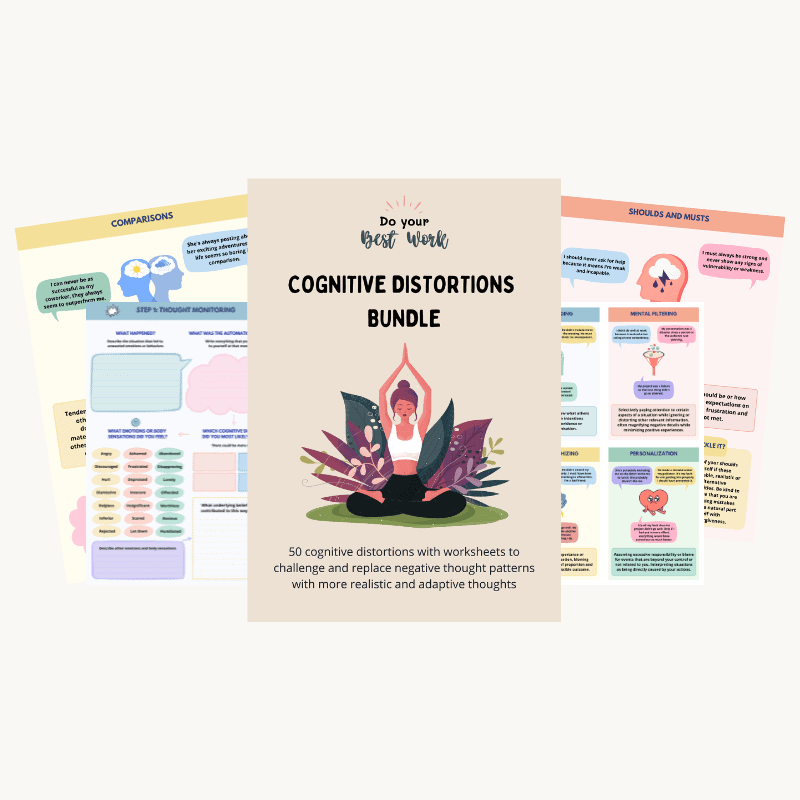Leadership Qualities: 21 Leadership Traits That Define Great Leaders

Leadership qualities like integrity, humility, focus, confidence, transparency, inspiration, passion, accountability, vision, innovation, patience, authenticity, open-mindedness, decisiveness, affectionate, generosity, persistence and insightfulness are beautiful words that look good on pictures and posters that adorn the wall of offices.
To understand what makes someone a truly great leader, we need to move from a superficial attribution of their characteristics to the underlying behaviors and actions that make up these qualities.
What do great leaders do to drive an organisation to success?
How do they make decisions?
What makes them connect to their people?
How do they handle challenges?
Each situation at work puts multiple qualities of a leader to test. Balancing the needs of the organisation to the well being of its people and self is an art mastered through years of learning and deliberate practice.
Great leaders aren’t perfect and they are not always right, but they clearly exhibit a set of leadership qualities that makes them stand out. You can see it in the way they navigate chaos in a complex world, visualise future and speak of it with a strong conviction, draw out the path to what success looks like and take people along in their journey to a better and brighter future.
They aren’t necessarily charismatic, confident types who can fool us with their persona, but rather simple humans driven by a greater cause and purpose who see beyond themselves to the needs of their organisation and its people.
As John C. Maxwell said “A leader is one who knows the way, goes the way, and shows the way”
21 leadership qualities that make great leaders

These 21 leadership qualities describe the specific behaviours, mindset and actions of truly great leaders:
1. Achieve right balance of effectiveness and efficiency
Effectiveness is doing the right thing with the desire for a better future that leads to growing business and people by separating things which shouldn’t be done at all from the ones that add value to the organisation. It requires asking “Why is this being done”.
Efficiency is doing things in the best possible manner with least effort, time and resources. With a focus on the now, it requires asking “What needs to be done” to improve current systems and processes.
Great leaders understand that effectiveness trumps efficiency. Doing the right thing less efficiently is better than doing the wrong thing efficiently.
As Stephen R. Covey puts it in The 7 Habits Of Highly Effective People “If the ladder is not leaning against the right wall, every step we take just gets us to the wrong place faster.”
With a forward looking focus, great leaders not only understand what happens within the bounds of their organisation, but also tune in to the outside reality.
They design the big picture in their mind by visualising the demands of tomorrow and matching them to the realities of today. This helps them guide their teams to do the right thing right by not losing sight of the big picture.
In summary, they define the goals of the organisation by determining what needs to be done and why.
2. Connect strategic planning to tactical execution
Great leaders invest in aligning strategic planning to tactical execution. They understand that strategy without tactics is intent without action.
Through strategic planning, they define the direction to take while ensuring tactical execution in the form of concrete actions and steps inline with the direction.
Peter Drucker rightly puts it in The Effective Executive
“No decision has been made unless carrying it out in specific steps has become someone’s work assignment and responsibility. Until then, there are only good intentions”
He then goes on to say –
“Converting a decision into action requires answering several distinct questions: Who has to know of this decision? What action has to be taken? Who is to take it? And what does the action have to be so that the people who have to do it can do it? The first and the last of these are too often overlooked—with dire results”
Great leaders are not only strategic thinkers, they also know how to put their thoughts to action to make their dream a reality.
3. Invest time in making few decisions
There are literally hundreds of activities that demand a leader’s time and attention, making decisions is one of them. Andy Groove says in High Output Management “Remember too that your time is your one finite resource, and when you say “yes” to one thing you are inevitably saying “no” to another.”
Great leaders know that every decision they make themselves deplete their mental resources and sucks away into their time.
By identifying decisions they need to make themselves from the ones that can be pushed to the lower levels in the organisation, they cut down on the unnecessary demands on their time and energy and invest it in work that requires their attention.
Instead of being stuck in analysis paralysis and responding to uncertainty with indecision, they feel comfortable in making decisions with incomplete information.
They also utilise the power of mental models like first principles, second order thinking and inversion to make the best decision under the given circumstances.
Great leaders commit to making a few decisions, but making them well.
4. Utilise the power of thinking big
David J. Schwartz says in The Magic of Thinking Big
“The size of your success is determined by the size of your belief”
and
“What really matters is not how much intelligence you have but how you use what you do have. The thinking that guides your intelligence is much more important than the quantity of your brainpower”
Great leaders may not be high on intelligence or the smartest in the group, but they do engage in the practice of thinking big which requires them to cross the mental boundary of comfort to explore the discomfort.
They are careful in exploring the discomfort by setting high expectations with their teams while avoiding being delusional through their unreasonable and impractical demands.
By engaging in this mental practice, they also encourage others to do the same.
Skip Level Meeting Questions + Template
Use these skip level meeting questions with indirect reports to bridge the gap, get a better perspective on how things are going and maintain a human connection with each person on your team.
5. Reflect maturity to disagree and commit
Instead of agree to disagree which stems from a negative mindset of right vs wrong, us vs them and lacks commitment, great leaders choose to disagree and commit which divulges the importance of commitment despite our differences. At its core, disagree and commit supports unity, maturity to disconnect our identity from our ideas and support others even when we do not agree to their point of view.
Jeff Bezos points out “Disagree and commit is not surrendering, but a genuine decision to trust his team. It’s a genuine disagreement of opinion, a candid expression of my view, a chance for the team to weigh my view, and a quick, sincere commitment to go their way”
Great leaders value disagreements as a means to explore alternate viewpoints and do not hesitate to share their intent and disagreement clearly to ensure they are being heard in the decision process.
At the same time, when a decision doesn’t turn out the way they anticipated, instead of sticking to their argument, they find ways to support others in their decision.
They understand that for any idea to succeed, it needs complete support from all the stakeholders in the decision process, even when these stakeholders did not agree to it initially.
6. Get past the emotional baggage of sunk costs
Sunk costs, invested time, money and effort that is now irrecoverable and no longer relevant to current decision impacts thinking in organisations in a huge way.
The cognitive dissonance that arises from investing and not getting expected returns leads to a psychological trap. The decision making process becomes an emotional journey as opposed to being a rational choice.
Ed Catmull describes this in Creativity, Inc
For many people, changing course is also a sign of weakness, tantamount to admitting that you don’t know what you are doing. This strikes me as particularly bizarre—personally, I think the person who can’t change his or her mind is dangerous. Steve Jobs was known for changing his mind instantly in the light of new facts, and I don’t know anyone who thought he was weak
Knowing when it’s time to abandon the cause and when to stay the course is a great leadership quality that only a few possess. Great leaders are able to get past sunk costs and weigh in opportunity costs of sticking to a decision as opposed to quitting it.
Instead of being stuck with the past and making further investments in an idea that fails to show promised return only in an attempt to look competent or save their reputation, great leaders do not hesitate to admit mistakes and move on to better opportunities in front of them.
Eisenhower Productivity Planner Worksheet
Organize your to-dos and clear out unnecessary tasks with the help of this powerful planner.
7. Build critical thinking skills in the organisation
Few leaders demonstrate the leadership quality of asking questions as opposed to telling their people what to do or providing them with solutions to their problems.
As Jennifer Garvey Berger puts it in Simple Habits for Complex Times “The point isn’t to be the hero and solve things; the point of the leader in a complex world is to enable and unleash as many heroes and as many solutions as possible”
When leaders engage with their employees by asking open ended questions and employing the practice of Socratic questioning as a means to explore complex ideas, analyse concepts, identify issues and uncover assumptions, they challenge them to expand the boundary of their thinking to new ideas and form new connections instead of sticking to what they know or what comes most intuitively to them.
By developing critical thinking skills in the organisation, these leaders enable their people to question the effectiveness of an idea, explore future possibilities and make the right decisions without giving in to groupthink.
8. Make people feel heard
Giving people your full attention by being present instead of being distracted by your thoughts makes them feel heard, valued and respected. This in turn inspires them to share their ideas, listen intently to others and collaborate instead of taking a one-sided view of a conversation.
Great leaders speak less and listen more. By giving an opportunity to others to express themselves and listening to their viewpoints, they build a deep sense of connection to their people thereby enabling trust and a sense of mutual respect.
Celeste Headlee writes in We Need to Talk “It only takes one good conversation to change your understanding of someone else’s world, your world, and the world at large.”
Being present is a leadership quality that makes great leaders inspire, motivate and bring out the best in their people.
9. Attain scale through empowerment
Leaders who do not delegate work and responsibilities to reduce their load, but rather believe in empowering their employees understand that empowerment is not delegate and forget, it’s delegate and follow-through.
They grow their teams to take on the responsibility that comes with empowerment by developing methods that enable the team to separate decisions they can make independently from the ones that require collaboration, equipping the team with the required competence, providing clarity that encompasses a set of values and principles to make the best decision under the given circumstances and most importantly use feedback as the necessary tool to learn and improve.
Empowering employees by defining the boundary of control, building competence, providing clarity and learning through corrections enables them to scale their organisations and grow their people.
10. Balance enthusiasm with risks
Freedom is power and with great power comes great responsibility. Giving people freedom comes with its own set of risks that need to be analysed and proper measures put in place to deal with it.
By balancing enthusiasm with risks, great leaders establish a culture in which freedom goes hand-in-hand with taking commitments seriously, employees learn to respect their boundaries and develop awareness of the consequences of their actions and the impact it has on the organisation and its people.
The expectation to monitor one’s own behaviour provides autonomy with a sense of responsibility.
11. Paint a true picture
John C. Maxwell says in The 21 Irrefutable Laws of Leadership “Anyone can steer the ship, but it takes a leader to chart the course. Leaders who are good navigators are capable of taking their people just about anywhere.”
Whether it’s the missed revenue targets, lost market share or the dreaded possibility of a bankruptcy, great leaders do not try to paint the wrong picture or hide facts from their employees.
They are transparent and truthful in laying out the current state of the company while providing a sense of the path ahead.
By facing the reality of their situation and not hesitating to answer uncomfortable questions, they build trust with their employees. This in turn motivates employees to be part of the leaders’ journey and do everything in their power to turn the company around.
12. Promote a growth mindset
Great leaders invest in their team to develop a growth mindset by reviewing past failures and drawing lessons from it, implementing new strategies and ways of doing things, learning from others and providing opportunities to strengthen existing skills and build new ones.
They encourage poor performers on their team by coaching how effort and perseverance can help them build the career capital required to do their job better.
By promoting a growth mindset, they inspire their people to be a little better every day, step outside their comfort zone, stretch themselves and not give up when faced with difficult situations or challenging circumstances.
This enables employees to have more trust in their organisations and develop a much greater sense of ownership and commitment.
13. Shift people from drama to action
Blaming other people or situations for not achieving targets is the most common excuse adopted by people in organisations.
People fall for the victim mindset by believing things beyond their control are responsible for their situation while ignoring the effect of their own contribution to the current state.
Blaming others for the way things turned out keeps them stuck with the problem instead of looking for potential solutions. This hampers productivity, breaks collaboration and is the source of a lot of drama at work.
A great leader leads by shifting people from taking on the role in the drama triangle to assuming the role of a creator. They help people see the power of not blaming others and taking responsibility for their own state by shifting from the problem to the outcome they desire.
14. Act as a growth multiplier
Great leaders act as a multiplier for their people. In their presence, people shine, feel smarter, are more self aware and confident of their capabilities.
Liz Wiseman explains this in Multipliers
“Leaders rooted in the logic of multiplication believe: 1. Most people in organizations are underutilized. 2. All capability can be leveraged with the right kind of leadership. 3. Therefore, intelligence and capability can be multiplied without requiring a bigger investment.”
and
“Multipliers invoke each person’s unique intelligence and create an atmosphere of genius—innovation, productive effort, and collective intelligence”
By acting as a multiplier, they are able to increase the collective intelligence of the organisation and better prepare their teams to meet growth demands.
15. Create safe and trusting workplace
Amy Edmondson, professor at Harvard Business School, first identified the concept of psychological safety in work teams in 1999.
She says “Psychological safety isn’t about being nice, It’s about giving candid feedback, openly admitting mistakes, and learning from each other. And she argues that kind of organizational culture is increasingly important in the modern economy.”
When leaders create psychologically safe environments, they create a culture in which people do not hesitate to speak up, ask questions and even make mistakes.
This in turn leads to better communication, collaboration and even innovation. When people seek experimentation without fear of reprisal, they are more likely to admit mistakes, learn from them and try harder to push further in their ideas and solutions.
Another aspect of creating a safe workplace is the idea of fairness in a leader’s approach. Great leaders are fair in assigning work responsibilities, deciding on promotions and sponsoring employees.
16. Develop feedback rich environments
Leaders who go beyond the boundary of the traditional feedback systems to care for their people invest in their growth and success. They use the power of skip level meetings to design their organisations and address its problems by connecting with their indirect reports.
By using feedback as a necessary tool to learn and improve, they invest in creating a culture where feedback is not only given behind closed doors from the manager to their employees, but rather it’s a way of doing work in the organisation.
In a feedback rich environment, regardless of the role or position, people feel invested in their own growth and seek and share feedback in their day-to-day work.
17. Negotiate using win-win strategies
Unlike the popular belief, great negotiation isn’t a win-lose affair in which one side must lose for the other to win.
Being able to drive negotiation using a win-win mentality is the most impactful quality of a leader as it determines the outcome of a business deal and serves as a path to build meaningful, long term relationships with people, both within and outside the organisation.
Leaders who operate using win-win strategies consider other people’s point of view while stating their own and show flexibility by considering alternative solutions instead of sticking to their original proposal.
By adopting an attitude to collaborate instead of making an attempt to move people in their direction, they build trust and create better opportunities for all the parties involved.
18. Turn blind spots to strengths
As a leader of an organisation, it’s natural to not know everything. There are gaps in how leaders view themselves and how others perceive them leading to inadvertent blind spots.
As an example, leaders who lead from fear can have a profound negative impact on people in the organisation. They can create a toxic culture with disengaged and unmotivated employees that lead to mediocre performance and unrealised potential.
Great leaders are highly self aware of the impact their behaviours and actions have on others. They actively watch their behaviour and seek feedback to understand how others around them feel and what they can do to build trust with their people.
They do what Jim Dethmer advises in The 15 Commitments of Conscious Leadership
Once leaders develop self-awareness, they create the possibility for shifting, a master skill of conscious leaders. Shifting is moving from closed to open, from defensive to curious, from wanting to be right to wanting to learn, and from fighting for the survival of the individual ego to leading from a place of security and trust
By facing reality and showing willingness to let go of their ego, they are able to lead people from a place of understanding instead of leading from fear.
19. Aware of their biases
People are at the effect of confirmation bias when they seek data that’s in line with their belief system and reject anything that contradicts their point of view, they give in to fundamental attribution error when they attribute a person’s behaviour to their character without taking into account the limitations and constraints within which the person might be operating.
These biases are a part of being human and leaders are not free from them.
Great leaders are aware that while they cannot avoid these biases in all situations, they can learn to apply practices that help them catch these biases and put processes in place to avoid them when the stakes are high.
20. Accept vulnerability
Building a culture where willingness to learn is valued more than the ability to provide answer starts with leaders who show openness to new ideas, flexibility to change their opinion and promote doing the right thing as opposed to being right.
As Larry Bossidy puts it “The more you can contain your ego, the more realistic you are about your problems. You learn how to listen, and admit that you don’t know all the answers. You exhibit the attitude that you can learn from anyone at any time. Your pride doesn’t get in the way of gathering the information you need to achieve the best results. It doesn’t keep you from sharing the credit that needs to be shared. Humility allows you to acknowledge your mistakes.”
When leaders accept vulnerability, they encourage others to be curious, listen to diverse viewpoints and channel their energy to do things that are in the best interest of the organisation and its people as opposed to pretending to know or sticking to their viewpoint.
21. Invest in self
In the end, only a healthy mind and body can lead effectively. Leaders who practice self care build small habits that compound in the future – eating healthy, exercising, investing time in reading, sleeping better or anything else to take care of themselves.
These practices may seem insignificant on a specific day, but when calibrated over weeks, months and years, they yield a significant return in a leader’s ability to think clearly and lead effectively.
By practicing kindness and care towards themselves, great leaders are able to show compassion towards others.
Leadership is a journey, a path committed to learning and practicing these leadership qualities day in and day out. Anyone can call themselves a leader, but only a few are worthy of being great.
What leadership qualities do you value in great leaders? Write to me or share your thoughts in the comments below.



































